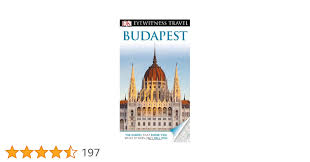
Introduction
Budapest, the capital of Hungary, is renowned for its historical significance, architectural beauty, and vibrant cultural life. Situated along the banks of the Danube River, it has emerged as a prime European destination, drawing millions of visitors each year. The city’s unique blend of history, modernity, and art makes it not only a favorite spot for tourists but also a vital cultural hub in East-Central Europe.
Architectural Marvels
Budapest is home to a plethora of architectural styles that speak to its rich history. The stunning Parliament Building, a Gothic Revival masterpiece, is one of the city’s most iconic landmarks. Completed in 1904, it stands as the largest building in Hungary and a symbol of national pride. Other highlights include the Buda Castle, which offers panoramic views of the city, and the Fisherman’s Bastion, known for its fairy-tale architecture and terraces. Visitors can also explore the historical links to Roman and Ottoman eras, visible in structures like the Gellért Baths and the Great Market Hall.
Cultural Significance
The cultural scene in Budapest is vibrant and varied. The city is home to renowned museums such as the Hungarian National Museum and the Museum of Fine Arts, showcasing artifacts and art from various eras. The Budapest Opera House, celebrated for its stunning acoustics and architectural grandeur, continues to be a focal point for performing arts enthusiasts. Meanwhile, festivals like the Budapest Spring Festival and Sziget Festival attract artists and audiences from around the globe, highlighting the city’s role as a cultural melting pot.
Recent Events and Developments
As Budapest navigates the post-pandemic world, the tourism sector is seeing a revival with innovative measures in place. Recent reports indicate a steady increase in international arrivals, with tourist numbers in 2023 nearing pre-pandemic levels. The Hungarian government has implemented initiatives to promote sustainable tourism, aiming to preserve the city’s heritage while supporting its economy. Additionally, the recent development of new bike lanes and pedestrian areas showcases the city’s commitment to becoming more eco-friendly and accessible.
Conclusion
Budapest remains a dynamic destination that balances its storied past with modern advancements. As the city continues to develop its cultural offerings and improve infrastructure, it sets a benchmark for sustainable tourism in the region. For potential travelers, Budapest not only promises a rich experience steeped in history and art but also stands as a testament to resilience and innovation in today’s world. With its breathtaking sights and lively atmosphere, Budapest is sure to captivate hearts for generations to come.



